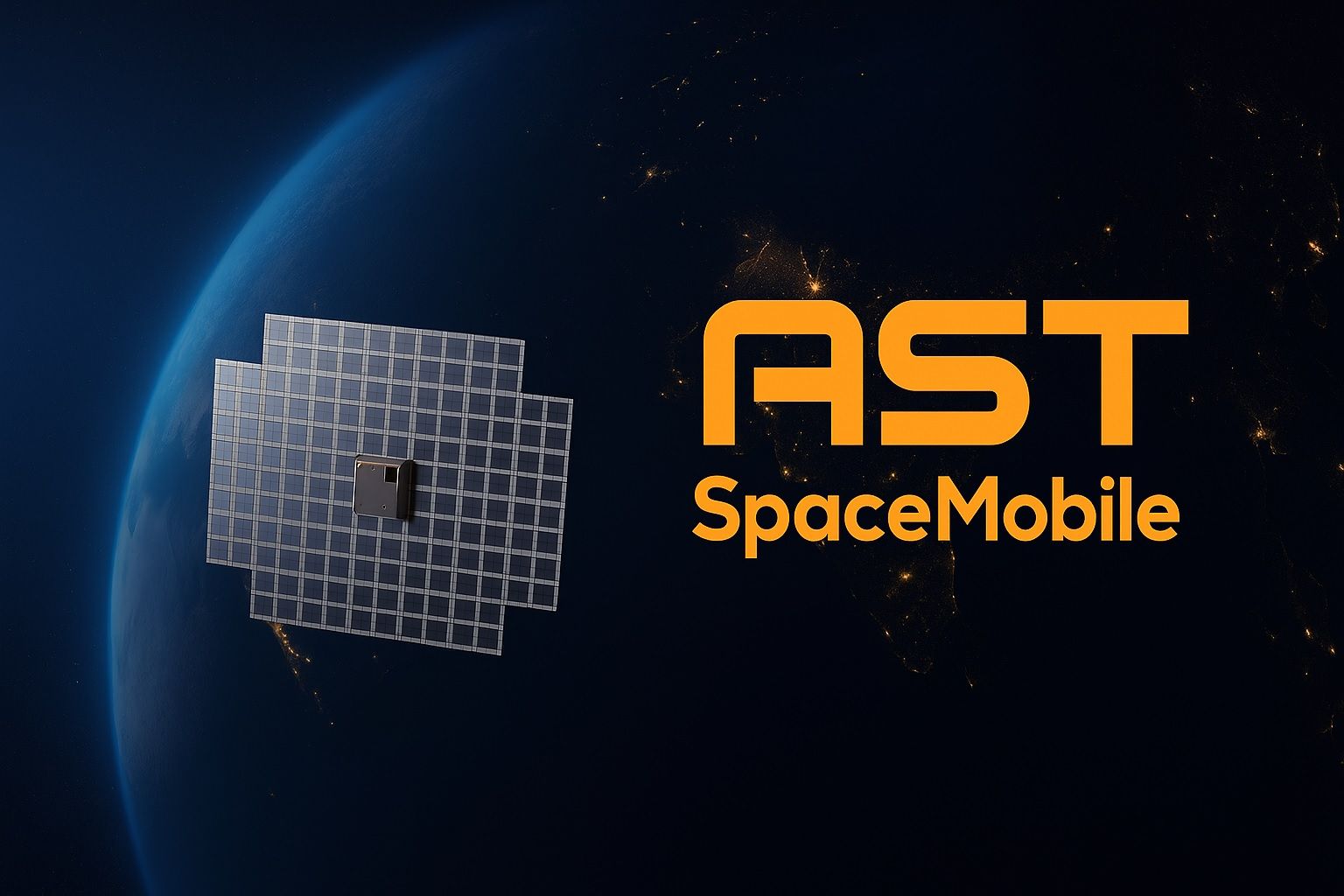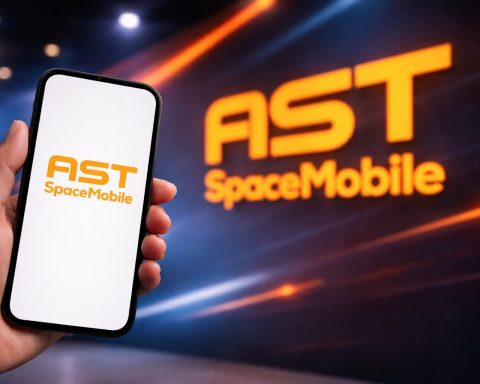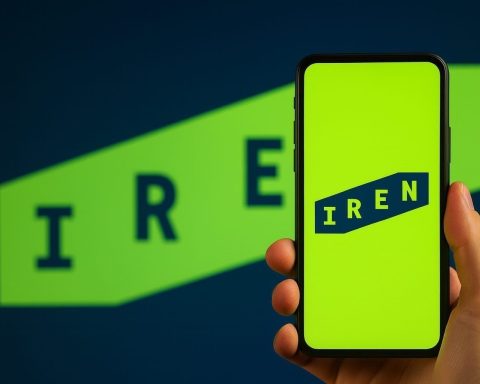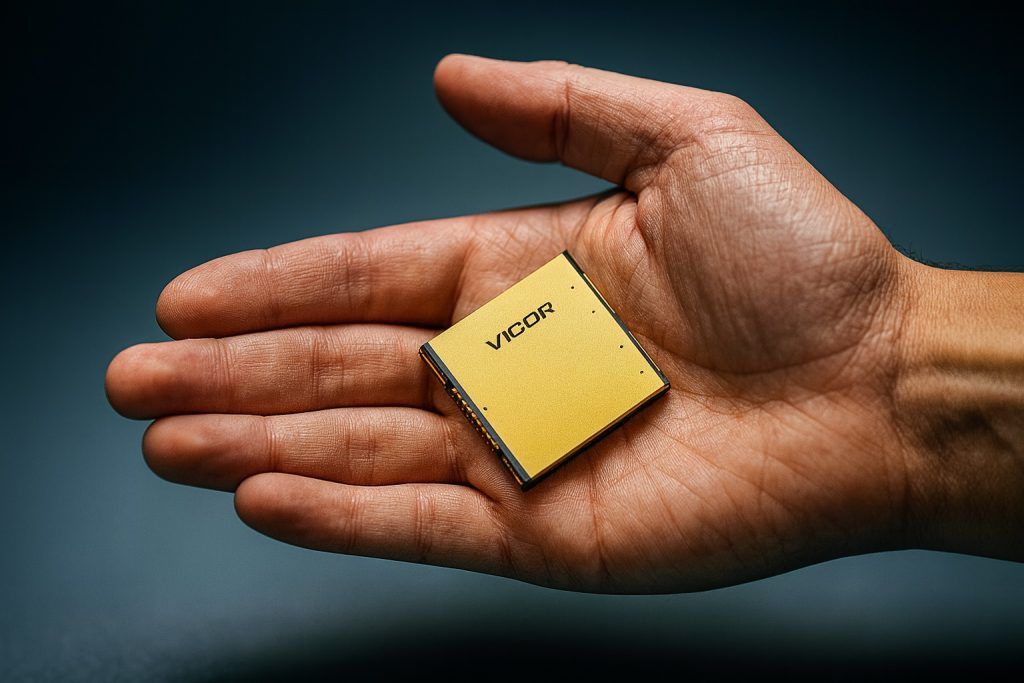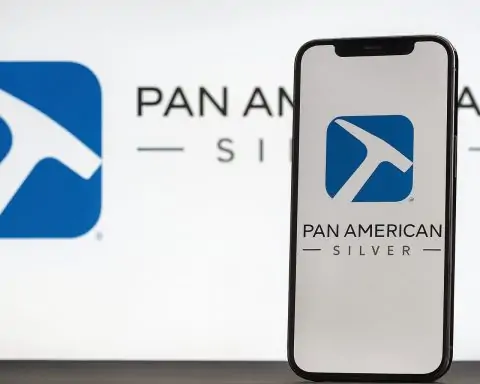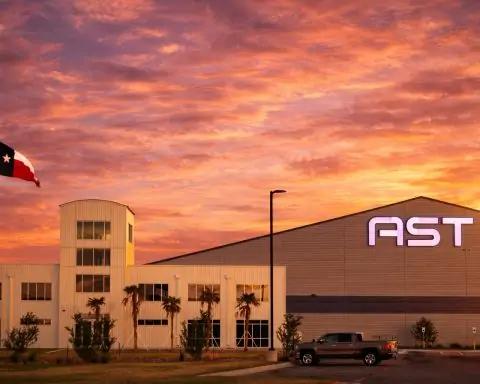- Recent Price Surge: ASTS stock is up roughly 300% in 2025, briefly hitting near $99 mid-October before profit-taking [1] [2]. As of Oct 21, 2025 the stock closed at $78.61 (market cap ~$23.5B) [3], well above its late-2024 level near $30.
- Major Partnerships: ASTS recently announced a Verizon partnership for space-based cellular service [4], and counts 50+ carriers (including Verizon, AT&T, Vodafone, Bell Canada) committed to trials or deployments [5] [6]. Canada’s Bell just completed first-ever 4G voice/SMS/data call via AST’s satellite, with service planned for 2026 [7].
- Satellite Deployment Plans: CEO Abel Avellan says ASTS has a “fully funded plan to deploy 45–60 satellites by 2026”, launching roughly one every 1–2 months [8] [9]. The next-gen BlueBird-6 satellite is ready for launch this quarter [10], and the FCC has approved AST’s plan to launch 20 satellites (with conditions) in 2025 [11].
- Technical Breakthroughs: ASTS’s BlueWalker-3 test satellite enabled the first direct 4G/5G voice and video calls from space to a standard smartphone [12] – a feat that competitors (like Lynk or Apple/Globalstar’s system) have only achieved with simple texts or SOS messages so far [13]. Vodafone and Bell Canada have already proven space-to-cell video and voice calls via AST’s network [14] [15].
- Valuation & Outlook: Wall Street is divided. Barclays raised its 12-month price target to $60 (Overweight) after ASTS’s progress [16], but the consensus target is only ~$45 (implying ~50% downside) [17]. UBS cut its target to $43 on execution risks [18]. Short sellers have built large bets (~20% of float) against ASTS’s lofty valuation [19]. Analysts forecast initial pilot revenues of $50–75M in H2 2025 and ~$20M in Q3 (vs. last year’s $5M total revenue) [20], but warn that “no margin for error” remains [21].
Stock Price and Recent Performance
AST SpaceMobile’s stock has been one of 2025’s hottest stories. After trading around $30 in late 2024, ASTS rallied over 300% this year on a wave of positive news [22] [23]. In early October the stock broke out of the $40s on back-to-back ~16% jumps [24], hitting all-time highs above $74.77 [25] (and briefly ~$99 on Oct 17 [26]). This month’s catalyst was a partnership announcement with Verizon, which helped ASTS reach an intraday record near $100 [27]. However, volatility has emerged: a dilutive share offering in early October caused a 6% pullback [28], and a $575M convertible debt raise (plus an $800M share sale) pressured the stock. By Oct 21 ASTS settled at $78.61 [29], still well above its year-ago level.
As of Oct 21, ASTS trades at about $78.61 [30], down ~5% from the previous day but far above its late-2024 price. Its 52-week high is $102.79 [31]. The company’s market cap is ~$23.5 billion [32], a staggering figure given only a few million dollars in revenue last year [33]. Indeed, TS2.tech reports ASTS is now valued at about $30 billion [34]. Retail investors have gone “extremely bullish” on the stock, making it a trending ticker on social media [35] [36]. The rapid gain has left technical indicators “overbought,” and after reaching its recent peak the stock briefly fell ~6% on profit-taking [37]. In short, ASTS has delivered “astronomical gains in 2025” but also large swings as it races to prove its technology [38].
Key Developments and News
Verizon partnership: On Oct 17, ASTS announced an agreement with Verizon to extend Verizon’s 850 MHz spectrum into remote areas using space-based broadband [39] [40]. CEO Avellan called it “a big step toward eliminating dead zones,” and Verizon’s CTO said it paves the way for “a future where everything and everyone can be connected” [41]. The deal (financial terms undisclosed) confirmed that major carriers see AST’s satellites as a way to plug rural coverage gaps [42].
Satellite milestones: In late September AST announced its next-gen BlueBird-6 satellite (Block 2) completed assembly and testing [43], marking progress toward its constellations. BlueBird-6 is slated for launch by late 2025, with BlueBird-7 already in the pipeline [44]. AST says it has built components for 46 satellites total so far [45]. This means AST’s long-delayed launch program is “kicking into high gear” – CEO Avellan noted it as concrete progress toward moving out of R&D [46].
Historic demo with Bell Canada: In early October AST and Bell Canada completed Canada’s first-ever space-based 4G voice call, SMS and data session via AST’s satellite [47]. Standard smartphones in Canada successfully used AST’s orbiting “cell tower” to make a call and stream video. Bell’s CTO says they will roll out AST service in 2026 after trials [48]. He highlighted that AST’s system provides true broadband voice/data (unlike text-only links) in remote regions [49]. This real-world test – accompanied by Vodafone’s own first space-video-call earlier in 2025 [50] – gives ASTS powerful evidence that its network can deliver what carriers need. Chris Ivory, AST’s Chief Commercial Officer, hailed the Bell demo as a “breakthrough achievement” toward broadband everywhere [51].
Fleet expansion plan: All these demos support AST’s big rollout. The company reaffirms a “fully funded plan to deploy 45 to 60 satellites into orbit by 2026” [52]. TradingView and TS2 report AST will launch satellites about every 1–2 months in 2025–26 [53] [54]. Already it has five BlueBird prototypes aloft and is now building satellites BlueBird 6–16 for deployment [55]. It has secured launch deals with SpaceX, Blue Origin and India’s ISRO [56], plus 20-satellite approval from the FCC [57]. In short, AST is finally moving from testing toward a live network.
Funding and cash burn: Investors are also watching AST’s finances. In Q2 2025 the company reported a loss of $0.41 per share on $1.16 M revenue (up 29% YoY) [58]. Management expects initial revenues of $50–75 M in late 2025 from pilot programs [59]. To fund its buildout, AST raised about $575 M in convertible debt in July and has filed to sell up to $800 M in new shares [60] [61]. On Oct 21 it priced a $1.0 B, 2.0% note due 2036 (upsized from $850M) to close Oct 24, and it is selling 2.0 M new shares at $78.61 each to retire $50 M of old debt [62] [63]. These moves will boost its war chest (AST had ~$1.5B cash mid-2025 [64]), but also introduce dilution. Indeed, TS2 notes share offering news on Oct 7 sparked a ~6% stock drop on dilution fears [65]. ASTS warns investors these financings and any note conversions could affect the stock price [66] [67].
Analyst Forecasts and Commentary
Wall Street is divided on ASTS’s runaway run. According to TS2.tech, Barclays recently raised its price target to $60 (Overweight) after AST’s technical progress [68], arguing that AST’s full voice/data service could command premium pricing vs rivals’ text-only links [69]. By contrast, UBS cut its target to $43 on worries about execution. The consensus 12-month target is only around $45, implying roughly 50% downside from current levels [70]. Short sellers have taken notice: over 20% of ASTS’s float is now sold short [71].
Analysts expect AST to start ramping sales once service begins. TS2 notes Wall Street forecasts about –$0.17 EPS for Q3 2025, an improvement over prior losses [72]. The company itself guided $50–75 M in pilot revenues in H2 2025 [73] [74]. If achieved, that would mark ASTS’s first meaningful revenue (prior to this it had only ~$5 M last year) [75]. Bulls imagine that AST’s constellation could unlock $1+ billion annual sales in a few years. TS2 reports experts calling AST’s tech “game-changing,” but cautioning there’s “no margin for error” [76] given stiff competition.
Industry analysts also highlight ASTS’s vast market potential: its addressable base spans the ~3 billion subscribers of its carrier partners [77]. As one stock newsletter puts it, AST SpaceMobile is the “Amazon of satellite connectivity” – a high-flying disruptor aiming to redefine global networks – whereas Iridium is the “Microsoft of the sector”: reliable, mature, and cash-generative [78]. That analogy reflects the sentiment divide: Iridium Communications (IRDM) has a steady business (66 satellites, strong government/IoT revenue, 5% annual growth [79]) and trades at modest multiples (P/S ~3.6x, P/E ~28x [80] [81]), while ASTS’s valuation assumes hyper-growth (AST trades at ~68x sales [82], and its P/E is negative).
Financial commentators also compare AST’s model to SpaceX’s Starlink. Light Reading notes the fundamental difference: Starlink is a “deeply vertically integrated” system (SpaceX builds and launches satellites and now even owns spectrum [83]), whereas ASTS follows a carrier-partnership model, using huge phased-array satellites and licensed terrestrial spectrum to connect directly to cell phones [84] [85]. In fact, SpaceX’s recent $17–19 B deal to acquire EchoStar’s spectrum for Starlink has prompted AT&T and Verizon to ally behind ASTS as their satellite partner [86]. One analyst describes this as an unprecedented “co-opetition” – the legacy rivals jointly backing ASTS to counter the Musk/T-Mobile bloc [87]. In short, telecom insiders are now treating AST SpaceMobile as the counterweight to SpaceX’s ambitions.
Company Overview and Business Model
AST SpaceMobile (NASDAQ: ASTS) is a Texas-based satellite telecommunications company founded in 2017. It is building the first global cellular broadband network in space – effectively putting cell towers in orbit – that can connect to standard, unmodified smartphones [88] [89]. AST’s engineers call it a way to “eliminate the connectivity gaps” for the ~5 billion people without reliable broadband [90]. Its SpaceMobile constellation uses massive phased-array satellites (each with a ~2,400 ft² antenna [91]) to cover entire regions. Unlike companies that require new devices, ASTS’s tech works with existing 4G/5G phones. This is a key selling point: as Gulf News notes, ASTS has demonstrated satellite video calls on ordinary phones and has carrier partnerships (Verizon, AT&T, Vodafone) to bring the service to market [92] [93].
ASTS went public via SPAC in 2021 and has no legacy customer base. It is still pre-commercial, with revenue coming only from small pilot contracts and government deals so far [94]. Its business model is strictly wholesale – selling connectivity bandwidth to mobile network operators (MNOs) rather than consumers directly [95]. In practice, ASTS signs partnerships with carriers who then offer satellite-enabled service on their networks. The company now boasts deals or trials with 50+ carriers worldwide (AT&T, Verizon, Vodafone, Rakuten, etc.) [96] [97]. For example, ASTS’s network underlies Verizon’s rural coverage strategy and Bell Canada’s upcoming 2026 service. These alliances give ASTS a huge potential user base: carriers with about 3 billion subscribers have expressed interest [98].
AST’s core competitive edge is its technology: its BlueBird-series satellites have achieved two-way 4G/5G calls from space [99], a feat unmatched by any rival. Apple/Globalstar’s sats currently only handle emergency texts, and Lynk Global is still limited to text/voice tests [100]. By contrast, AST aims to beam full broadband. The company holds thousands of patents in phased-array antenna tech, giving it a “first-mover advantage” over others [101]. It has also secured key spectrum rights in L-band and S-band to ensure global coverage [102].
In summary, AST SpaceMobile sees itself as building a space-based extension of the cellular network, letting people in remote areas use their phones as if there were a cell tower overhead. CEO Abel Avellan and team are racing to make this a reality by 2026; the recent flurry of launches, tests, and deals is their evidence for investors that the network is nearing reality.
Competitive Landscape
AST SpaceMobile operates in a crowded and dynamic field of satellite communications. Its closest competition comes from SpaceX’s Starlink, which is also targeting phone connectivity. However, the approaches differ. SpaceX just acquired extensive spectrum and is planning its own Direct-to-Cell service (partnering with T-Mobile) [103]. Starlink’s model is integrated end-to-end (SpaceX builds satellites and owns spectrum) [104]. In contrast, ASTS relies on partnerships with carriers and massive satellite antennas [105] [106]. As one telecom analyst notes, ASTS is out to solve coverage gaps via carrier-backed satellites, while Starlink is building a “ubiquity moat” for its broadband. The recent carrier alliances (Verizon/AT&T co-op) highlight how the two approaches are now on a collision course [107].
Other satellite companies are also eyeing the same market:
- Iridium Communications (NASDAQ: IRDM) operates a mature constellation (66 satellites) for voice/data, especially for government, maritime and IoT customers. Iridium’s growth is steady (~5% yearly) and it trades at a modest valuation (P/S ~3.6x [108], P/E ~28x [109]). It offers reliability and dividends, but its technology (narrowband voice/data) is very different from AST’s broadband vision [110] [111].
- Lynk Global is a startup doing “cell tower in space” small sats. Lynk has shown texting and basic voice calls with regular phones, but is still far behind in bandwidth and scale [112].
- Apple/Globalstar: Apple’s iPhones now use Globalstar satellites for Emergency SOS texting in off-grid scenarios. Globalstar (with Apple’s backing) plans only narrowband emergency messaging, not full broadband. It has raised about $1.7B from Apple to expand capacity [113], but it remains a very different, limited service.
- Amazon’s Project Kuiper: Amazon is building a large LEO broadband network (similar to Starlink) that could eventually offer phone connectivity. Kuiper is still in rollout phases, with a focus on general internet access [114].
- OneWeb: A UK/India venture providing broadband via low-earth satellites. OneWeb primarily aims at internet in remote regions, but it is exploring partnerships with telcos that could enable phone connectivity [115].
- Globalstar: Mentioned above with Apple, Globalstar is expanding its D2C services beyond SOS to include apps like Find My (with iOS 18) [116]. It now has $1.7B from Apple to add 17 new satellites [117].
- SES (and others): Even large satellite operators like SES are looking at mobile extensions of their broadband networks through partnerships.
In short, nearly every satellite player is chasing the “direct-to-cell” vision. AST SpaceMobile’s edge has been its focus on true two-way broadband to unmodified phones, and its early carrier deals. But rivals like SpaceX/Starlink and Amazon have far deeper pockets and scale, and smaller players like Lynk are nipping at the heels in specialized niches. As one industry note puts it, the race is on but “it’s too soon to call a winner in direct-to-cell broadband” [118]. Investors should watch how AST manages execution and cash burn in this intense competitive “war” [119] [120].
Sources: Recent financial news and filings (AST SpaceMobile press releases [121] [122]), TS2.tech analyses [123] [124], trading platforms [125] [126], and industry coverage (Benzinga, AInvest, etc.) [127] [128] [129] [130], plus statements from company executives and analysts. These sources provide the data and expert commentary summarized above.
References
1. ts2.tech, 2. stockinvest.us, 3. stockinvest.us, 4. ts2.tech, 5. ts2.tech, 6. ts2.tech, 7. ts2.tech, 8. www.tradingview.com, 9. ts2.tech, 10. ts2.tech, 11. ts2.tech, 12. ts2.tech, 13. ts2.tech, 14. ts2.tech, 15. ts2.tech, 16. ts2.tech, 17. ts2.tech, 18. ts2.tech, 19. ts2.tech, 20. ts2.tech, 21. ts2.tech, 22. ts2.tech, 23. ts2.tech, 24. ts2.tech, 25. ts2.tech, 26. ts2.tech, 27. ts2.tech, 28. ts2.tech, 29. stockinvest.us, 30. stockinvest.us, 31. stockinvest.us, 32. stockinvest.us, 33. ts2.tech, 34. ts2.tech, 35. ts2.tech, 36. ts2.tech, 37. ts2.tech, 38. ts2.tech, 39. ts2.tech, 40. ts2.tech, 41. ts2.tech, 42. ts2.tech, 43. ts2.tech, 44. ts2.tech, 45. ts2.tech, 46. ts2.tech, 47. ts2.tech, 48. ts2.tech, 49. ts2.tech, 50. ts2.tech, 51. ts2.tech, 52. www.tradingview.com, 53. www.tradingview.com, 54. ts2.tech, 55. ts2.tech, 56. ts2.tech, 57. ts2.tech, 58. www.tradingview.com, 59. ts2.tech, 60. ts2.tech, 61. ts2.tech, 62. www.businesswire.com, 63. www.businesswire.com, 64. ts2.tech, 65. ts2.tech, 66. www.businesswire.com, 67. www.businesswire.com, 68. ts2.tech, 69. ts2.tech, 70. ts2.tech, 71. ts2.tech, 72. ts2.tech, 73. ts2.tech, 74. ts2.tech, 75. ts2.tech, 76. ts2.tech, 77. ts2.tech, 78. www.ainvest.com, 79. www.ainvest.com, 80. www.ainvest.com, 81. www.ainvest.com, 82. www.ainvest.com, 83. www.lightreading.com, 84. www.lightreading.com, 85. ts2.tech, 86. www.lightreading.com, 87. www.lightreading.com, 88. www.businesswire.com, 89. ts2.tech, 90. www.businesswire.com, 91. ts2.tech, 92. gulfnews.com, 93. ts2.tech, 94. ts2.tech, 95. ts2.tech, 96. ts2.tech, 97. ts2.tech, 98. ts2.tech, 99. ts2.tech, 100. ts2.tech, 101. www.ainvest.com, 102. ts2.tech, 103. www.lightreading.com, 104. www.lightreading.com, 105. www.lightreading.com, 106. ts2.tech, 107. www.lightreading.com, 108. www.ainvest.com, 109. www.ainvest.com, 110. www.ainvest.com, 111. www.ainvest.com, 112. ts2.tech, 113. gulfnews.com, 114. gulfnews.com, 115. gulfnews.com, 116. gulfnews.com, 117. gulfnews.com, 118. gulfnews.com, 119. ts2.tech, 120. www.lightreading.com, 121. www.businesswire.com, 122. www.businesswire.com, 123. ts2.tech, 124. ts2.tech, 125. www.tradingview.com, 126. stockinvest.us, 127. www.tradingview.com, 128. ts2.tech, 129. www.lightreading.com, 130. www.ainvest.com
